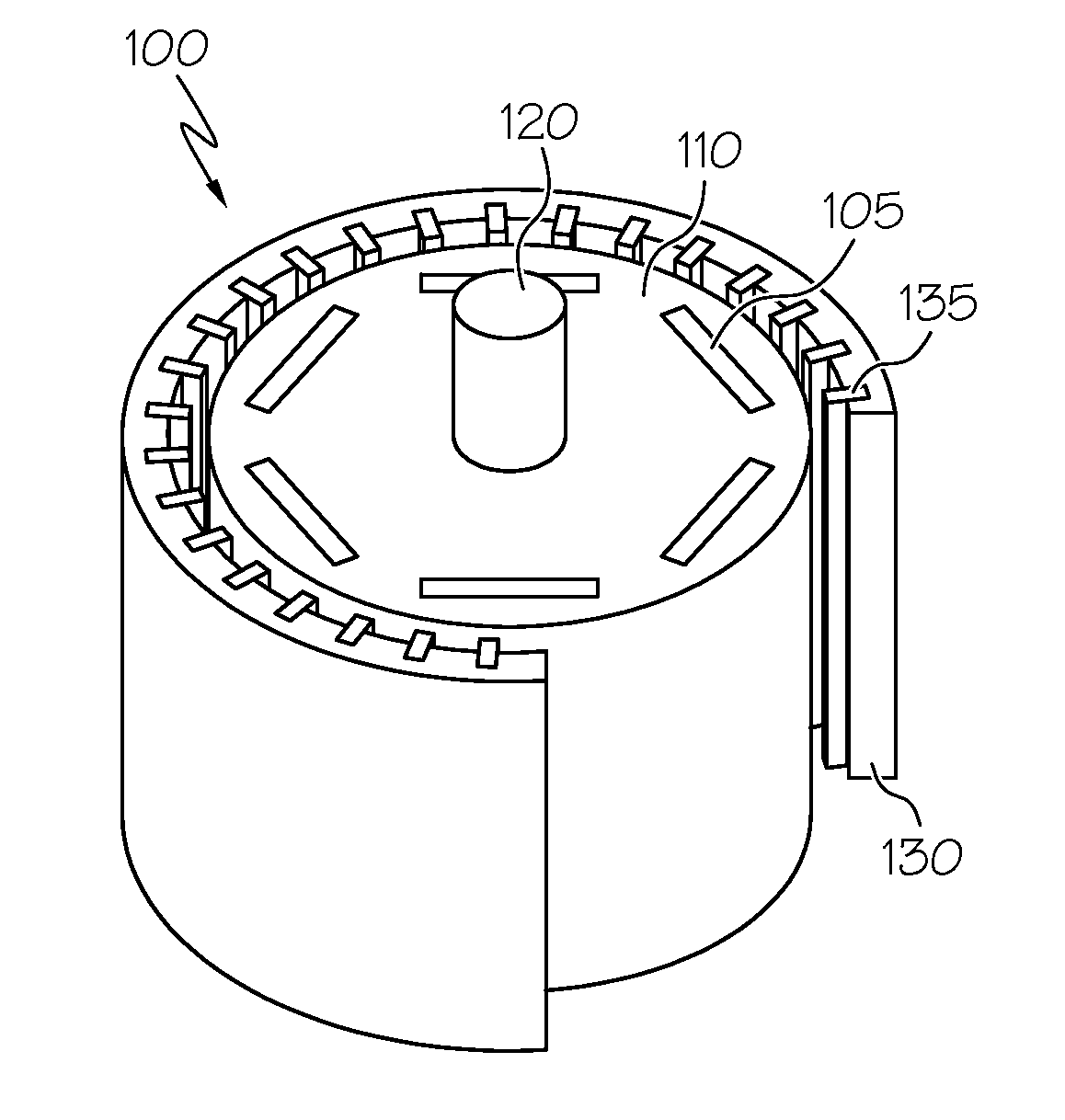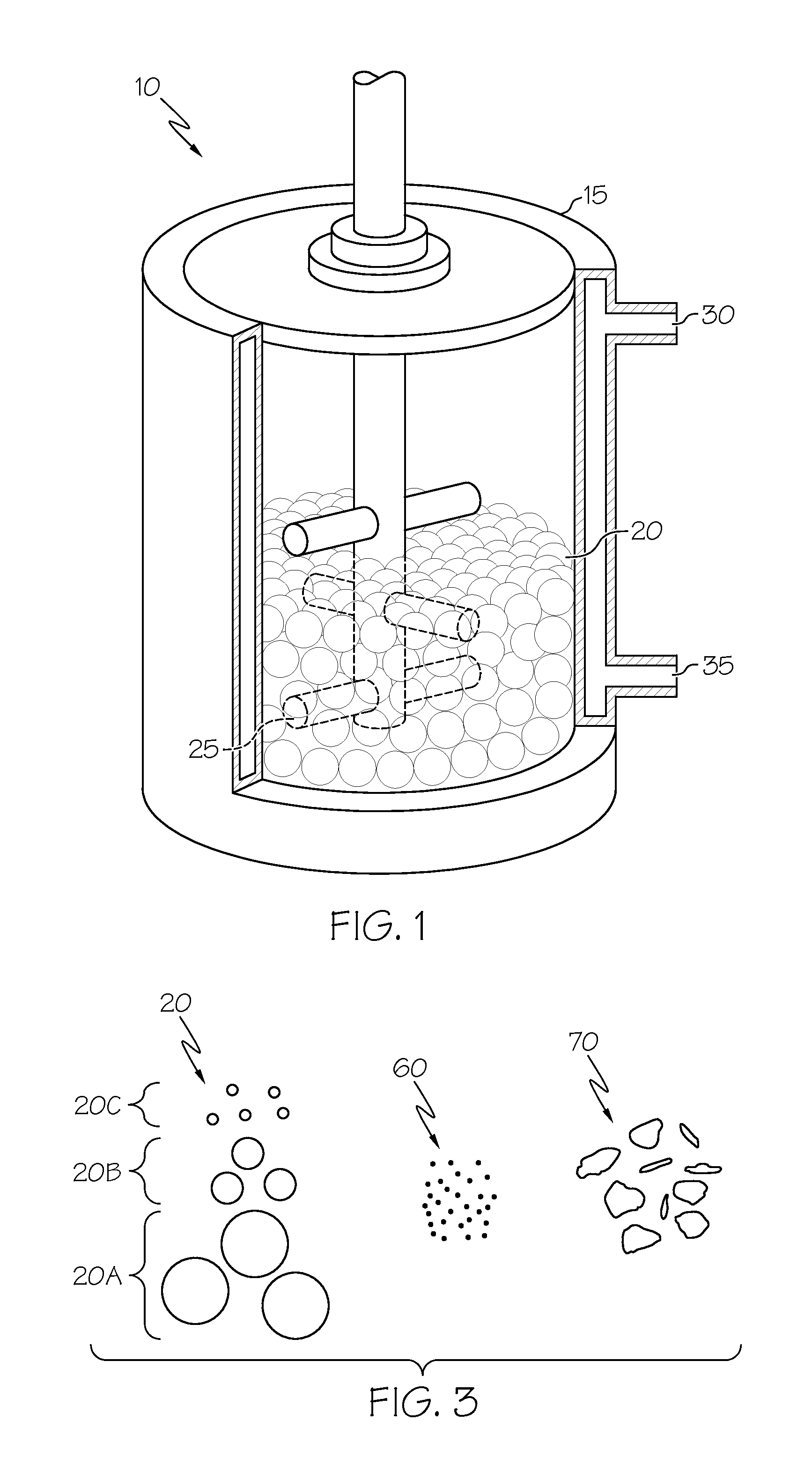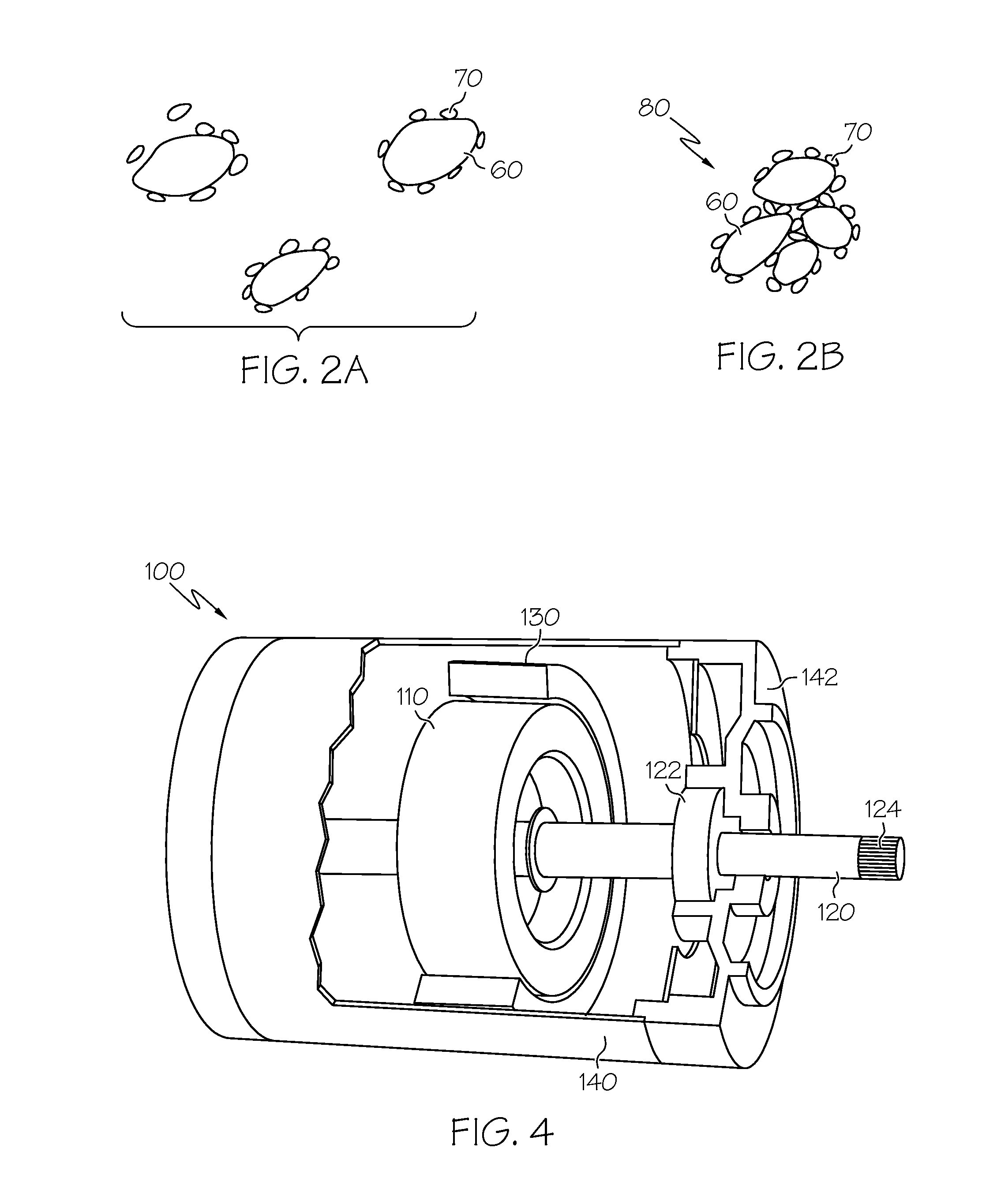Method of making nd-fe-b sintered magnets with reduced dysprosium or terbium
a technology of terbium-sintered magnets and nd-fe-b, which is applied in the field of electric motors, can solve the problems of tb, high price of dy, and even more expensive than dy, and achieve the effect of keeping the overall usage low
- Summary
- Abstract
- Description
- Claims
- Application Information
AI Technical Summary
Benefits of technology
Problems solved by technology
Method used
Image
Examples
Embodiment Construction
[0023]U.S. application Ser. No. 13 / 007,203, filed Jan. 14, 2011, entitled Method Of Making Nd—Fe—B Sintered Magnets With Dy Or Tb (hereinafter the '203 application), which is assigned to the assignee of the present invention and is incorporated herein in its entirety by reference, describes magnets and three methods of making them that use much less Dy or Tb than those made using the conventional methods while obtaining similar magnetic properties. Of the three powder coating methods discussed in the '203 application, the present inventor has discovered ways to improve one of them (mechanical milling, also referred to herein as mechanical alloying); such improvements are the subject of the present invention.
[0024]Dy or Tb (or their alloys) coated Nd—Fe—B powders are used to make the magnet, which results in a microscopically non-uniform distribution of Dy or Tb in the magnet; such features may be seen and measured using a scanning electron microscope with a microprobe. The inventor ...
PUM
| Property | Measurement | Unit |
|---|---|---|
| Temperature | aaaaa | aaaaa |
| Temperature | aaaaa | aaaaa |
| Temperature | aaaaa | aaaaa |
Abstract
Description
Claims
Application Information
 Login to View More
Login to View More - R&D
- Intellectual Property
- Life Sciences
- Materials
- Tech Scout
- Unparalleled Data Quality
- Higher Quality Content
- 60% Fewer Hallucinations
Browse by: Latest US Patents, China's latest patents, Technical Efficacy Thesaurus, Application Domain, Technology Topic, Popular Technical Reports.
© 2025 PatSnap. All rights reserved.Legal|Privacy policy|Modern Slavery Act Transparency Statement|Sitemap|About US| Contact US: help@patsnap.com



